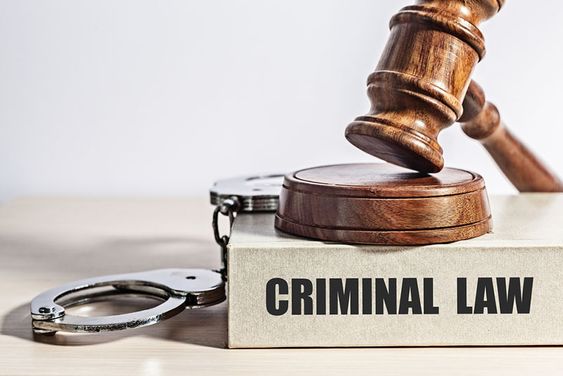Criminal law forms the backbone of any legal system and plays a crucial role in maintaining societal order and protecting the fundamental values of a society. This area of law focuses on punishing behaviors that are considered harmful, ranging from serious crimes that strike at the core of human existence to relatively minor offenses that cause only small disruptions to social harmony. By establishing clear norms and imposing proportional sanctions, criminal law aims not only to punish the offender but also to create a deterrent effect to prevent future criminal behavior. This comprehensive discussion explores ten key categories within criminal law, each shedding light on both the theoretical foundations and practical application of the law. Each section is analyzed in-depth with attention to legal definitions, investigative methods, forensic techniques, and societal impact, providing a complete picture of the complexity and diversity of the criminal justice system.
Crimes Against Life: Murder and Manslaughter
Crimes against life are among the most serious offenses in our legal system and directly relate to the most fundamental human right: the right to life. Murder, characterized by premeditation, involves a deliberate and cold-blooded intent, where the offender acts with extreme precision and purpose. In contrast, manslaughter is often marked by an impulsive or emotionally driven component, where a sudden outburst or conflict triggers the act. The legal approach to these crimes requires intensive forensic analysis, involving not only physical evidence but also digital traces, witness statements, and behavioral analyses. Judicial investigations by specialized teams, including forensic psychologists and pathologists, help reconstruct the circumstances and establish the degree of guilt. All of this forms the basis for a careful assessment of both aggravating and mitigating circumstances, so that the final sentence aligns with the seriousness of the offense.
Violent Crimes and Public Disorder
Violent crimes encompass a wide range of offenses in which physical violence and intimidation are central, ranging from occasional assault to systematic and repeated aggression. In these crimes, the level of violence and the context in which it occurs play a crucial role in legal qualification and sentencing. Public disorder is a specific form of violence where the aggression occurs in public spaces, directly affecting the collective sense of security within the community. Such incidents can lead to panic, disruption of public order, and lasting distress among citizens. In addition to physical evidence, there is significant attention given to the psychological impact and the creation of an atmosphere of fear, prompting judicial authorities to impose harsher sentences. Both individual actions and the broader societal consequences are carefully weighed.
Vandalism and Home Invasion
Vandalism is an offense that causes not only material damage but also undermines social safety and trust within the community. The deliberate damaging or destruction of property, often with the intent to sow fear and uncertainty, can have long-term emotional and financial consequences for the victims. Home invasion, where offenders break into private homes with or without the threat of weapons, adds an additional layer of personal insecurity. The combination of vandalism and home invasion creates a dual effect: not only is the property right violated, but the personal privacy of citizens is severely disrupted. These crimes require not only extensive forensic and technical investigations but also the involvement of specialized law enforcement and security teams who delve into burglary techniques and the motivations behind such actions.
(Armed) Robbery and Theft with Violence
Robberies are among the most shocking forms of property crime, where the use of violence represents a direct threat to the physical integrity and safety of victims. In an armed robbery, material damage is not the only outcome; an intimidating message is also conveyed to society. Theft with violence changes the dynamics of the crime by combining the unlawful acquisition of property with aggressive behavior that can cause serious physical and psychological harm. These crimes require a complex legal approach, in which both the weapons used and the circumstances in which violence was applied are thoroughly examined. Beyond material evidence, the assessment of intent and the degree of threat play a crucial role in determining the final sentence, ensuring both victim protection and the deterrent effect of the law.
Property Crimes: Diversity and Complexity
Property crimes form a broad and diverse spectrum of offenses primarily aimed at unlawfully obtaining financial or material benefits. This category includes traditional forms of theft, such as shoplifting and burglary, but also extends to complex financial crimes such as money laundering, embezzlement, and fraud. Each of these crimes has its own legal definition and requires specific evidence, ranging from direct observation and material proof to advanced financial forensic techniques. The approach to property crimes demands interdisciplinary collaboration between legal experts, financial forensic specialists, and, in some cases, international law enforcement agencies. This complex interplay of factors underscores the importance of accuracy in detecting and prosecuting such offenses, with both the direct damage and the indirect societal impact—such as undermining trust in financial systems—taken into account.
Hard Drugs and Soft Drugs under the Opium Act
The legal framework surrounding drug enforcement is a dynamic and often controversial area, where the approach to hard drugs and soft drugs diverges in both legal penalties and societal perceptions. Hard drug offenses, including possession, trafficking, and smuggling substances like cocaine, are generally punished more harshly due to the significant health risks and potential societal consequences of addiction. In contrast, the treatment of soft drugs often involves milder measures, partly due to changing societal views and an ongoing debate about the effects of legalization. This dual approach reflects the ongoing tension between prevention and rehabilitation: on the one hand, the need to protect public health and maintain public order, and on the other, the desire to treat users as victims of addiction. Legal reforms and policy discussions are thus inherently linked to the question of what a balanced and humane approach to drug-related issues might look like.
Insult, Threat, and Defamation
Offenses related to insult, threat, defamation, and slander touch on fundamental issues of freedom of speech and the protection of personal honor. These crimes create a legal tension in which, on one hand, freedom of expression must be safeguarded, while on the other hand, the personal integrity and reputation of individuals must be protected from harmful statements. Determining what is considered punishable requires a thorough consideration of context, intent, and the social consequences of the statements. Judicial authorities must carefully balance the right to criticize with the risk of escalation and the condemnation of unjust accusations. This delicate balance emphasizes the need for clear legal frameworks and guidelines that, on one hand, prevent the abuse of freedom of expression, and on the other hand, allow the necessary space for open and free discussion in a democratic society.
Traffic Offenses and Public Safety
Traffic offenses are a crucial part of criminal law, with an emphasis on the safety of all road users. These crimes range from minor offenses such as speeding and traffic violations to more serious incidents like driving under the influence of alcohol or drugs, where the risks of serious injury or death increase significantly. The legal framework surrounding traffic offenses is aimed not only at punishing the guilty party but also at minimizing the risk of reoffending through preventive measures such as driving bans or mandatory re-education programs. These measures are often combined with administrative sanctions such as fines and the revocation of driver’s licenses, thus creating an integrated system that addresses both the criminal and social aspects of traffic safety. The use of modern technologies, such as traffic cameras and data analysis, is playing an increasingly important role in identifying and addressing these offenses.
Weapons and Ammunition Act: Restrictions and Enforcement
The regulation of weapons and ammunition is an essential part of criminal law that forms the basis for preventing violent crimes and ensuring public safety. This legislation regulates the possession, sale, and use of weapons, with strict conditions aimed at preventing weapons from falling into the wrong hands. In addition to legal and illegal possession of weapons, this regulation also includes stringent requirements for the storage, transportation, and trade of ammunition. Enforcing these laws requires close cooperation between various agencies, including the police, customs, and justice, which jointly monitor compliance with the law. Furthermore, technological advancements play a role in identifying and tracing weapons, which facilitates the detection of illegal trade and contributes to more efficient prevention of violent crimes.
Sexual Offenses and the Protection of Personal Integrity
Sexual offenses cover a wide range of crimes, from sexual harassment and inappropriate behavior to assault and rape. These offenses have a profound impact on the victims, not only physically but also emotionally and psychologically. Criminal law plays a crucial role in providing protection to victims through a carefully balanced legal approach that considers both the seriousness of the crime and the individual circumstances of the victim. In the handling of sexual offenses, much attention is given to forensic evidence, witness statements, and sometimes specialized therapies, so that not only the perpetrator is held accountable, but the victim also receives the necessary support. The societal debate surrounding these offenses highlights the need for a legal system that is both strict and empathetic and that is committed to a balanced protection of the rights of all parties involved.
The Importance of an Integrated Criminal Justice System
Criminal law as a whole reflects the collective values and norms of a society and provides an integrated framework for addressing a variety of crimes. Every aspect, from life offenses and violent crimes to property crimes and sexual offenses, contributes to the broader goal of ensuring justice, safety, and order in society. A well-functioning criminal justice system is not only a means to punish the offender, but it also serves as a preventive measure by deterring potential perpetrators and strengthening public confidence in the rule of law. This system is continuously evaluated and adapted to changing social conditions, incorporating technological innovations and new insights from forensic science. It is this ongoing development and the collaboration between various legal and societal entities that ensure the criminal justice system responds appropriately to the complex and ever-evolving nature of criminal behavior.




